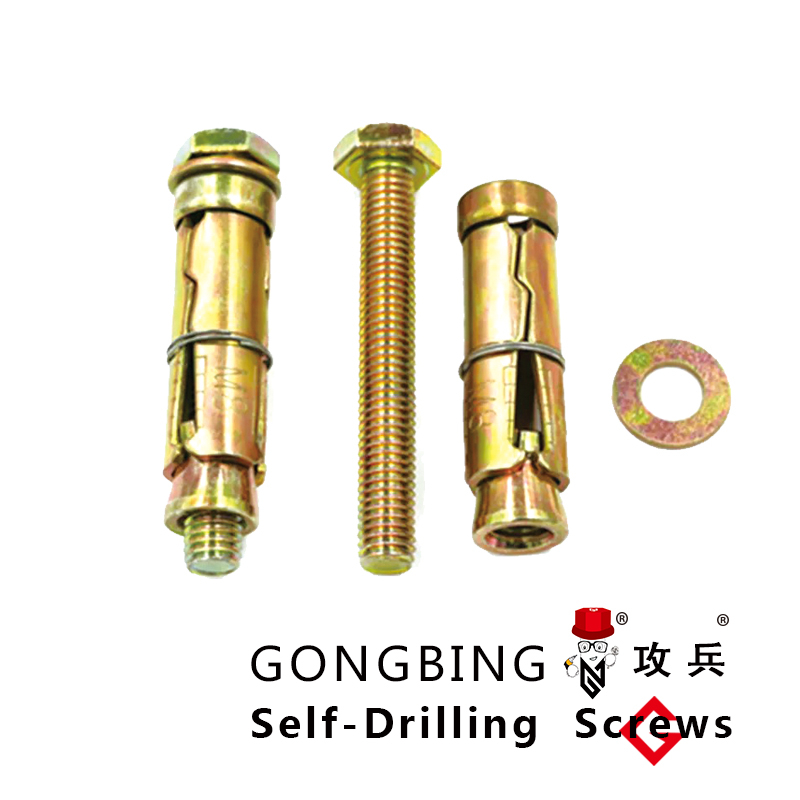Understanding the Benefits and Applications of Nail Expansion Anchors for Construction and Renovation Projects
Understanding Nail Expansion Anchors A Comprehensive Guide
When it comes to securing objects to masonry or concrete surfaces, nail expansion anchors are a popular choice among contractors and DIY enthusiasts alike. These anchors are designed to provide a reliable and durable solution for attaching various fixtures, fittings, and equipment to solid substrates. In this article, we will explore the functionality, types, installation procedures, advantages, and considerations associated with nail expansion anchors.
What are Nail Expansion Anchors?
Nail expansion anchors are fasteners that consist of a metal sleeve and a nail or shank. When installed into a pre-drilled hole, the anchor expands against the wall of the hole, creating a stronghold that keeps the anchor firmly in place. The simple design makes them suitable for a range of applications, from hanging shelves to securing heavier equipment.
Types of Nail Expansion Anchors
1. Standard Nail Expansion Anchors These are commonly used in light to medium applications. They typically come in various sizes to accommodate different nail diameters and lengths.
2. Heavy-Duty Nail Expansion Anchors Designed for more substantial loads, these anchors provide additional holding power. They are often used in industrial settings or for mounting heavy machinery.
3. Corrosion-Resistant Nail Expansion Anchors For outdoor applications or in areas with high humidity, corrosion-resistant anchors are essential. These are usually made from stainless steel or galvanized materials to prevent rust and degradation over time.
Installation Process
Installing nail expansion anchors is straightforward. Here’s a step-by-step guide
1. Select the Right Anchor Based on the weight and type of object you want to secure, choose an appropriate nail expansion anchor.
2. Drill a Hole Using a hammer drill or masonry drill bit, create a hole in the concrete or masonry surface. The diameter of the hole should match the specifications of the anchor.
3. Insert the Anchor Place the nail expansion anchor into the hole. Ensure that it is flush with the surface for a clean finish.
4. Drive in the Nail Use a hammer or a pneumatic tool to drive the nail into the anchor. As you drive the nail, the anchor expands against the walls of the hole, creating a secure fit.
nail expansion anchor

Advantages of Nail Expansion Anchors
- Strong Holding Power Nail expansion anchors provide a strong grip in concrete or masonry, making them ideal for heavy-duty applications.
- Ease of Use Their installation is relatively quick and uncomplicated, even for users with limited experience.
- Minimal Damage Because they expand rather than rely solely on friction, they minimize the risk of damage to the surrounding substrate.
- Versatility They can be used in various applications, from light fixtures to heavy machinery, making them a versatile choice.
Considerations
While nail expansion anchors are highly effective, it’s important to consider the following
- Weight Limits Ensure that the selected anchor can handle the weight of the object you are securing.
- Substrate Condition The quality of the masonry or concrete can affect the anchor's performance. Ensure the surface is not crumbling or damaged.
- Installation Depth Ensure the anchor is installed to the correct depth for optimal performance.
Conclusion
Nail expansion anchors are an excellent solution for attaching objects to concrete or masonry surfaces. With their robust holding power, ease of installation, and versatility, they are a favored choice among professionals and DIYers. By understanding their types, installation processes, and considerations, you can confidently employ nail expansion anchors in your projects, ensuring they serve their purpose effectively and reliably.
-
Weatherproof Plastic Expansion Anchors for OutdoorNewsJun.06,2025
-
Sustainability in the Supply Chain: Eco-Friendly TEK Screws ProductionNewsJun.06,2025
-
Load-Bearing Capacity of External Insulation FixingsNewsJun.06,2025
-
Double Head Bolts: Enhancing Efficiency in Industrial MachineryNewsJun.06,2025
-
Corrosion Resistance in Chipboard Screws: Coatings for Wholesale DurabilityNewsJun.06,2025
-
Butterfly Toggle Bolts : Enhancing Structural ResilienceNewsJun.06,2025
